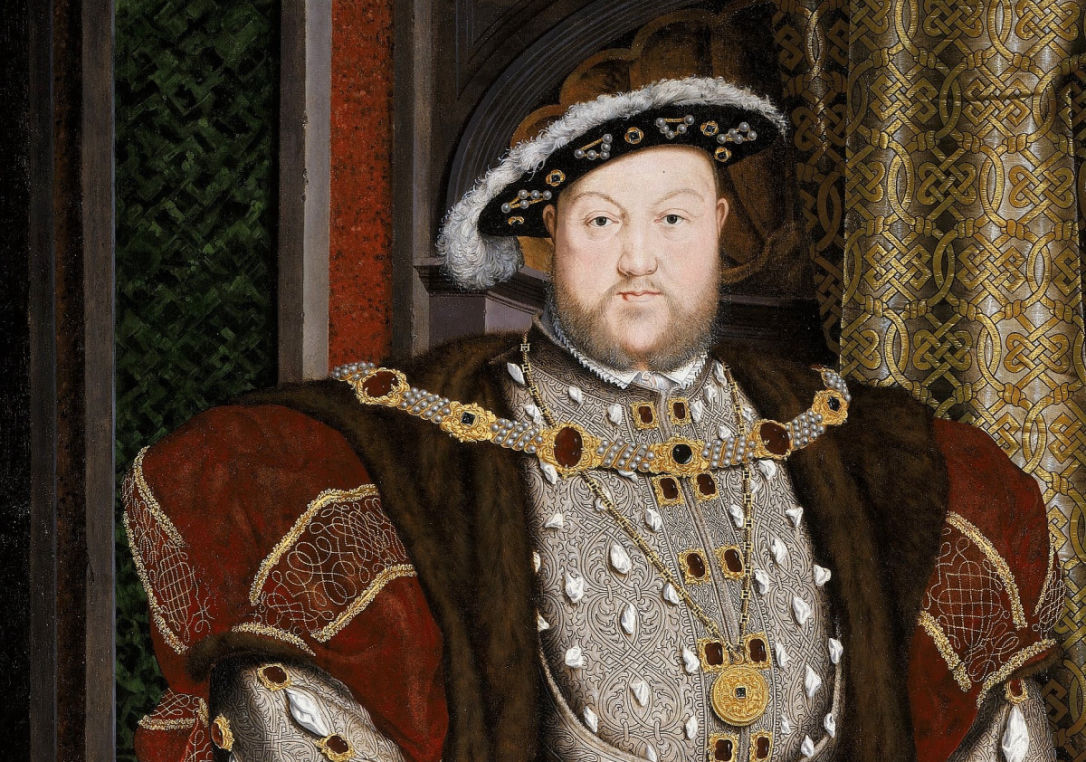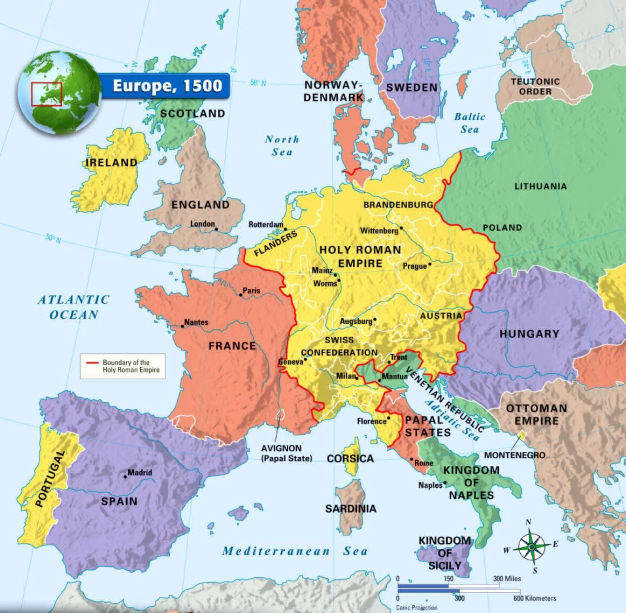



Henry VIII - The Break With Rome 2
Quick review:
One of the main reasons that Henry VIII decided
to break with the Church of Rome was that he was
not granted either a divorce or an
annulment.
Who can tell me what a ‘divorce’ is?
It is a legal ending of a marriage which
has been recognised as valid.
Who can tell me what an ‘annulment’ is?
An annulment is the ending of a marriage
which is said never to have been real - that
means that the marriage was not a true
marriage in the first place.
To sum up the points made towards the end of
the last lesson, Pope Julius II (Picture 3)
gave an annulment to the marriage of Arthur and
Catherine, allowing Henry to marry Catherine,
but Pope Clement II (picture 1) - the Pope after Julius - refused to give Henry
and Catherine
(Pictures 6 and 7) an annulment so Henry could marry Anne
Boleyn
(pictures 4 and 5).
Henry did try and try to get an annulment; he
sent Cardinal Wolsey here there and everywhere
to see the Pope and persuade him to give an
annulment - but was totally unsuccessful. This
was the main reason why Cardinal Wolsey lost
favour and ended up as an enemy of Anne Boleyn;
Wolsey was shunted off up to York, pleaded with
the King to let him back to Court but died
before he could become friends again with
Henry.
There were actually 11 main reasons why Wolsey failed to get an annulment. Here’s a list. It’s also on page 17 of the booklet.
1) The Pope used delaying tactics, to put off having to make a decision.
2) If the Pope said that the
previous Pope’s decision to grant an annulment
to Arthur and Catherine was wrong, that would
make people think that the whole Papacy
(everything to do with the Pope) was weaker. And
don’t forget that it seems everyone wanted power
in those days.
3) Charles of France
(Burgundy) (allied with Prussia and Spain) were
rivals, so Charles could not be relied on to
agree with anything which went against what
Ferdinand of Spain wanted.
4) Charles of France was a
strong character and dominated the Pope - he was
a powerful enemy, Charles, and cold threaten the
Pope’s power.
5) Cardinal Campeggio’s
(picture 2)
court ended without a decision - it was just a
waste of time.
6) The Bible (Leviticus)
wasn’t very clear or solid;
7) Charles of France
(Burgundy), who was also Holy Roman Emperor,
refused to let any papers about an annulment
leave Spain anyway so nothing could be
signed;
8) Charles of France
(Burgundy) and Catherine were relatives and he
would naturally want to keep her as functioning
Queen;
9) Catherine herself refused
to give up her marriage - she still loved
Henry;
10) Henry wanted a public
statement - a proclamation - that the marriage
was invalid. This was unheard of and an absolute
affront to everyone involved (including the
Pope)
And
11) All the data from Biblical
sources and the thoughts of theologians were a
bit dodgy - not solid facts and could be argued
against.
Henry even tried to get a court set up in
England to argue the case for an annulment; he
thought that if the court was in England he
could exert more influence over it and get what
he wanted. But the Pope refused and only sent
Cardinal Campaggio to ‘look into the
matter’.
Perhaps the most important person in the
failure to get an annulment was Catherine
herself.
Catherine was called before the court of
Cardinal Campaggio, and she simply refused to
acknowledge that the court was valid. She made a
passionate appeal to Henry then just walked
out.
Catherine still loved Henry; but she also had
pride in herself and her position. She had a
powerful personality, which made her well-loved
by the people - and she would not simply stand
aside so Henry could pick up the next
wife.
If the marriage of Henry and Catherine was
annulled, then probably Mary would be declared
‘illegitimate’.
What is an ‘illegitimate’ child?
A child who is illegitimate is one who is
born to an unmarried mother.
And if that happened, Mary could not become
Queen.
Catherine also maintained that her marriage to
Arthur was not consummated.
What is ‘to be consummated’?
To be proven by having intimate
relations.
If Catherine said that the marriage was not
consummated, there was not much anyone could do
- it was unprovable. So all the Biblical stuff
simply didn’t matter.
And finally, of course Catherine was popular
amongst the people. She was well-loved,
well-known, she made many visits among the
people, and that always endears a King or Queen
to the people.
When there was a debate in Parliament about the
possibility of an annulment, even under severe
threat, two bishops spoke up on here behalf and
fully supported her.
The Campaign against Papal
Authority
This is where things get more complicated. King Henry had to try to make sure everyone thought that the Pope was not good enough to be in charge of Henry and religion in England.
As everyone had been brought up very strongly
to believe that whatever the Church of Rome
said, must be true and obeyed or they would go
to Hell, to change those thoughts would be very
difficult indeed.
Henry tried to get the Pope to come to England
to hold his Court of enquiry into the Annulment;
the Pope insisted that Henry should go to Rome;
Henry point-blank refused to go anywhere for the
case.
Not only that (a direct refusal to do as the
Pope wanted), but Henry passed a Law in England
that gave him the title of Supreme Head of the
Church of England - which technically gave Henry
authority over the Pope. remember that everyone
was still a Roman Catholic at this time.
While Cardinal Wolsey was still in favour and still had lots of power, he tried these things to obtain an annulment.
All the above seems complicated and doesn’t seem to explain what exactly happened between Henry VIII and the Roman Catholic Church.
Put far more simply, the break between Henry
and the Church of Rome happened because the Pope
(Clement) refused to annul the marriage of Henry
and Catherine, so Henry could try for a boy
child with Anne Boleyn.
When the Pope refused, Henry just said
something like - “Ok, forget it - from now on,
the Church in England will be separate from the
Church of Rome, and I will be the head of the
Church of England and can give myself an
annulment”.
And so, that’s what he did. He separated the
Church in England from the the “Church of Rome”,
and it became called “The Church of
England”.
The Church of England is a protestant Church,
which means it has very small differences with
the Roman Catholic Church.
If you ever go to England, and go to a Church
of England High Church (an Abbey or a Cathedral)
service, and then later go to a Roman Catholic
service, you will see that almost everything
which is said and done is the very
similar.
(The main difference is that Protestants believe in a personal, one-to-one relationship with God and Jesus (which lets us find meanings given directly by God), and the Roman Catholics believe that The Pope is God’s representative on Earth, and has all the power to forgive sin and make statements which show God’s intentions.)